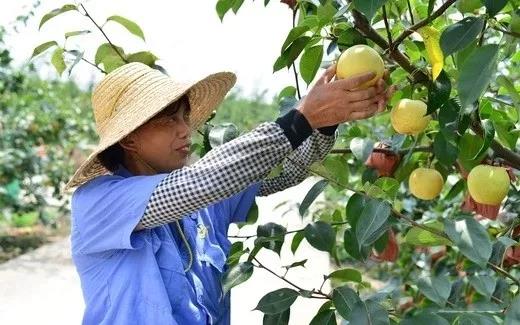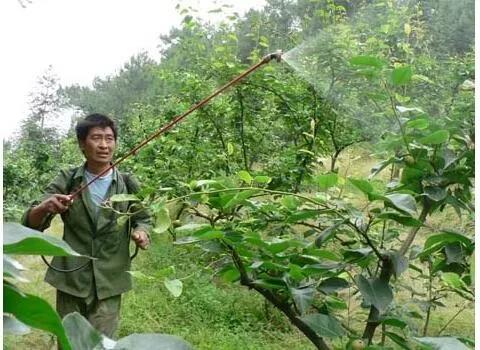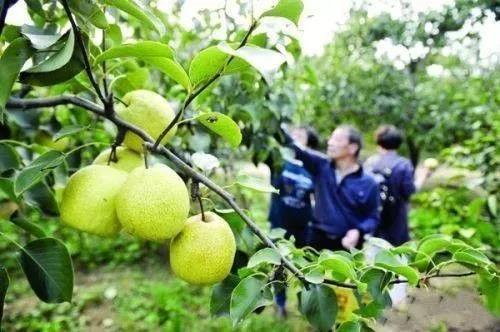Pear varieties, such as avocado, pear, long pear, perfume pear, etc., are mostly concentrated in mid-September - early October. After harvesting from late September to October, the temperature is suitable, the temperature difference between day and night is large, and the light is sufficient, which is very beneficial to the root growth and photosynthesis of pear trees. Pear tree leaves are earlier than apples, and flowering is earlier than apples in the following year. The growth of branches and leaves is early and concentrated, and the restoration of tree potential and nutrient accumulation in the two months after harvest in autumn are more important.
Most of the pear gardens and fruit farmers in the high-yield production pay more attention to the management of this period. The pear cultivation areas in North China are mostly autumn droughts, and the autumn harvest and wheat planting are relatively busy, and the management of pear orchards is often overlooked. Fruit farmers can irrigate, fertilize, and cultivate at the same time as the harvest of pears in mid-to-late September, using three measures to promote soil microbial activity, root growth, and photosynthesis. Furthermore, thinning and thinning of individual plants in densely planted gardens and canopy can improve the quality of flower buds and improve the quality of flower buds.

Strengthen fertilizer management
The cultivating can make the soil of the whole garden loose and breathable. Generally, the soil in the root extension range should be ploughed to avoid destroying the root system; if it is farther from the canopy, it is more suitable for deep turning. The standard for fertilization is 20-30 kg of high-quality farmyard manure, 0.25-0.5 kg of phosphorus pentoxide, and 0.5 kg of potassium oxide. An sloping line is formed around the extension of the root system. The groove is 40 cm deep and 40 cm wide. The fertilizer and soil are mixed and applied, and covered with soil. The focus of water management is drought-resistance and drainage, and it is recommended to cover the tree tray with weeds, the thickness is 10 cm, and then compacted with fine soil. In addition, after deep renovation, the green manure can be applied in the pear garden. Green manure contains a large number of elements such as nitrogen, phosphorus and potassium, and various trace elements such as calcium, magnesium, copper, zinc and boron. The application of green manure is not easy to cause deficiency, which can reduce the poor resistance caused by malnutrition and lack of trace elements. Abnormal physiological phenomena such as growth dysplasia.

Do a good job of leaf protection
After the fruit is harvested, the nutrient solution is sprayed on the foliar surface, and each time it is sprayed with 0.3% urea and 0.3% potassium dihydrogen phosphate, once every 10 to 15 days, for 2 to 3 times.
Prevention of pests and diseases
The main pests and diseases that harm pear trees after harvesting are pear black scab, pear black spot, rust and pear heartworm. It is necessary to adhere to the principle of pest prevention and control of “prevention first, comprehensive prevention”. Pear tree fruit picking disease will generally cause pear tree leaves, you can choose 70% methyl thiophanate wettable powder 800 ~ 1000 times liquid spray, 10 ~ 15 days, once every 2~3 times. The pests that harm the pear trees after harvest mainly include pear hibiscus, pear worms, etc. Physical control methods can be used, such as using temperature, spectrum, color, sound, odor, current equipment and other physical factors to induce, drive or kill pests and diseases. It is also possible to carry out drug control.

Reasonable pruning
While fertilizing the pear trees, the pear branches should be properly trimmed, the branches are thick and strong, and the branches are thin and less. To remove the excessively shady branches of the main branches or other backbone branches, such as prosperous new shoots, peripheral competition branches, and long branches, improve the ventilation and light transmission conditions of the trees, ease the tree potential, and promote flower bud differentiation. Excessive branches, thin branches, diseased branches, dead branches, etc. should be cut off and taken out of the garden for treatment. At the same time, picking up the heart of the late autumn, promote its lignification, so as not to suffer from freezing damage.
Contact: Mr. Ma
Phone: +86-0374-5699688
Tel: +86-0374-5699688
Email: [email protected]
Add: Fine Chemical Industry Park, Jianan District, Xuchang, Henan, China